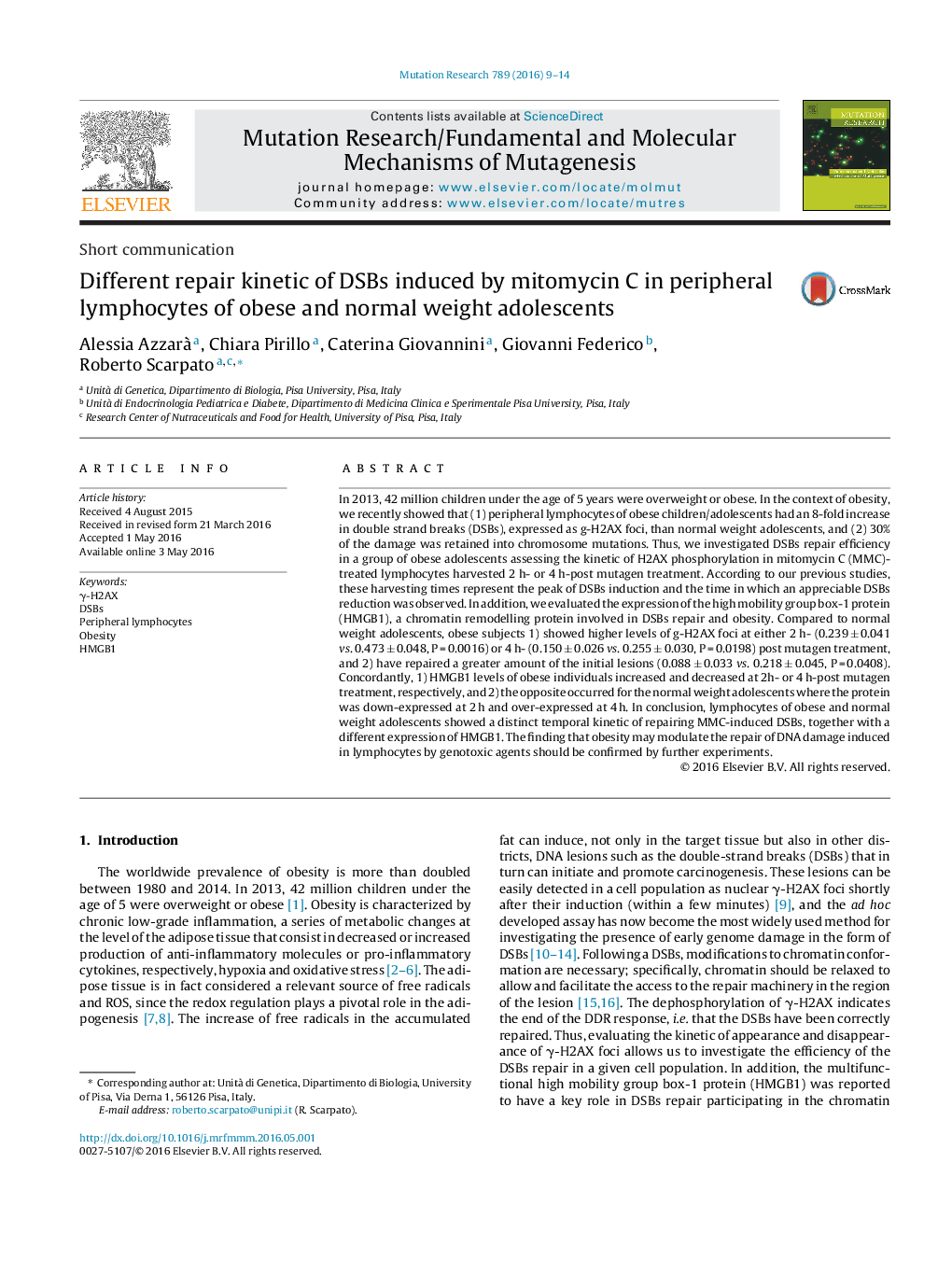| Article ID | Journal | Published Year | Pages | File Type |
|---|---|---|---|---|
| 2146130 | Mutation Research/Fundamental and Molecular Mechanisms of Mutagenesis | 2016 | 6 Pages |
In 2013, 42 million children under the age of 5 years were overweight or obese. In the context of obesity, we recently showed that (1) peripheral lymphocytes of obese children/adolescents had an 8-fold increase in double strand breaks (DSBs), expressed as g-H2AX foci, than normal weight adolescents, and (2) 30% of the damage was retained into chromosome mutations. Thus, we investigated DSBs repair efficiency in a group of obese adolescents assessing the kinetic of H2AX phosphorylation in mitomycin C (MMC)-treated lymphocytes harvested 2 h- or 4 h-post mutagen treatment. According to our previous studies, these harvesting times represent the peak of DSBs induction and the time in which an appreciable DSBs reduction was observed. In addition, we evaluated the expression of the high mobility group box-1 protein (HMGB1), a chromatin remodelling protein involved in DSBs repair and obesity. Compared to normal weight adolescents, obese subjects 1) showed higher levels of g-H2AX foci at either 2 h- (0.239 ± 0.041 vs. 0.473 ± 0.048, P = 0.0016) or 4 h- (0.150 ± 0.026 vs. 0.255 ± 0.030, P = 0.0198) post mutagen treatment, and 2) have repaired a greater amount of the initial lesions (0.088 ± 0.033 vs. 0.218 ± 0.045, P = 0.0408). Concordantly, 1) HMGB1 levels of obese individuals increased and decreased at 2h- or 4 h-post mutagen treatment, respectively, and 2) the opposite occurred for the normal weight adolescents where the protein was down-expressed at 2 h and over-expressed at 4 h. In conclusion, lymphocytes of obese and normal weight adolescents showed a distinct temporal kinetic of repairing MMC-induced DSBs, together with a different expression of HMGB1. The finding that obesity may modulate the repair of DNA damage induced in lymphocytes by genotoxic agents should be confirmed by further experiments.
